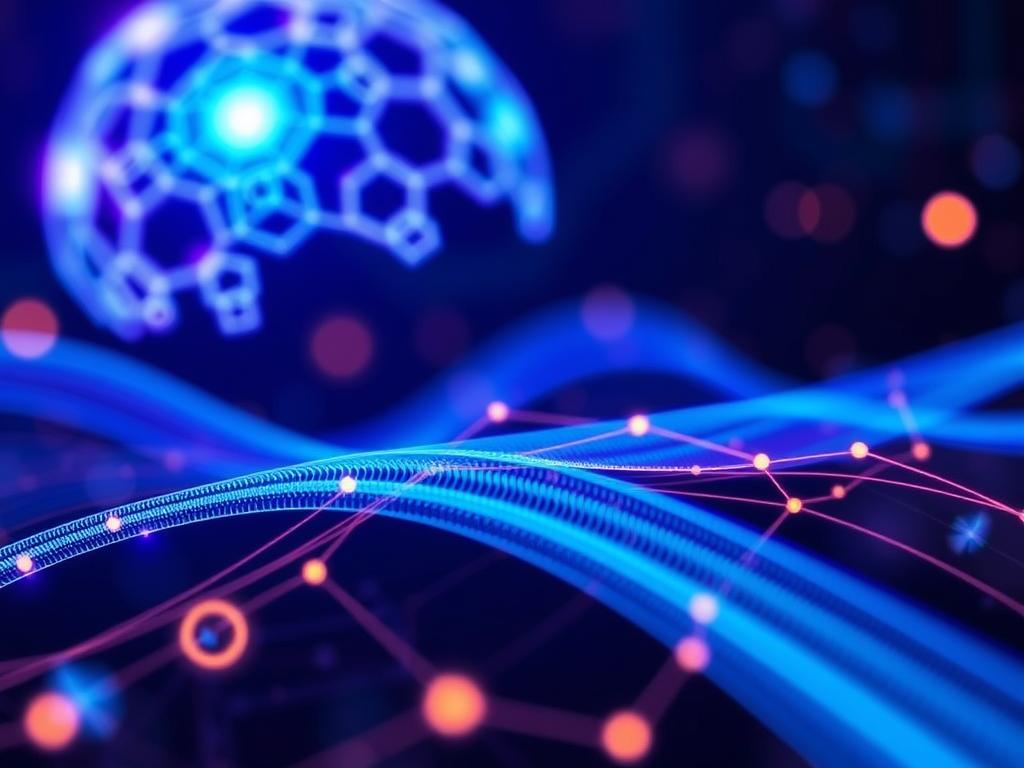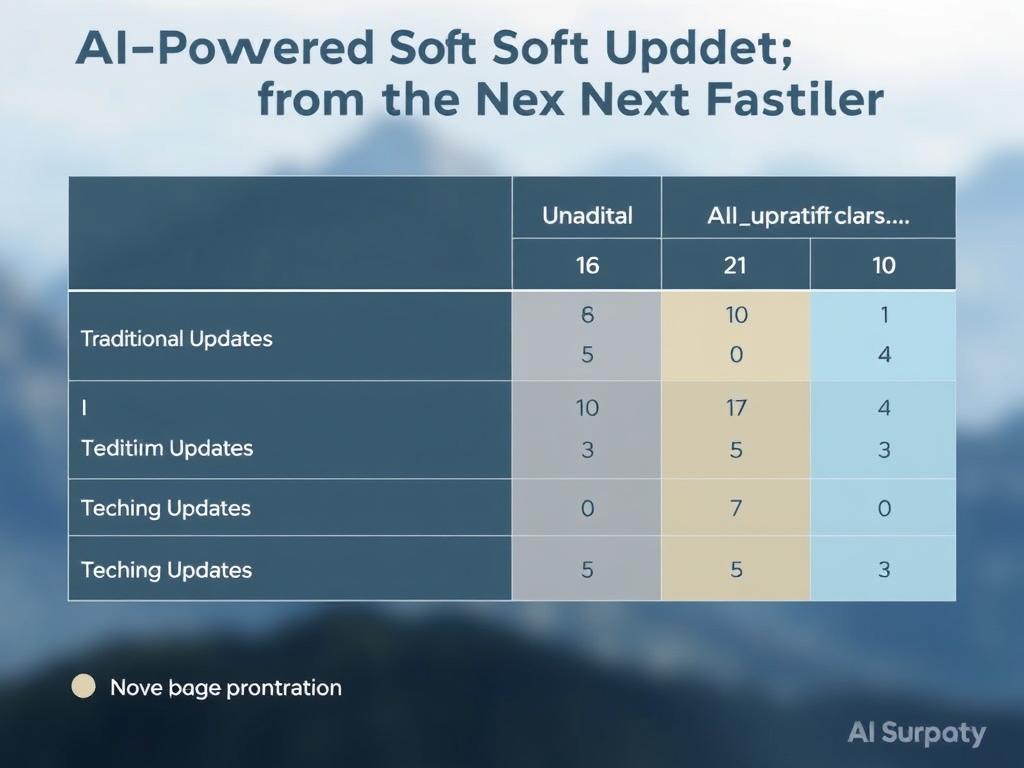Understanding Soft Updates: A Gentle Approach to System Changes
Soft updates, in the realm of computing and technology, represent a nuanced way of implementing changes and improvements without disrupting the entire system. Unlike traditional updates that often require stopping services, rebooting devices, or causing downtime, soft updates aim to integrate enhancements smoothly and continuously. This approach has been gaining traction as systems grow more complex and uptime becomes ever more critical. But what if artificial intelligence could supercharge these soft updates, making them even smarter, faster, and more adaptive? This is precisely where AI-powered soft updates enter the stage, marking an exciting new frontier.
Soft updates are designed with a careful balance in mind: ensuring consistency and reliability while minimizing interruptions. They apply updates “softly,” meaning data and configurations are incrementally adjusted rather than replaced all at once. This is particularly important in environments like databases, file systems, and distributed applications, where sudden changes can lead to inconsistencies or crashes. The real charm of soft updates lies in their ability to maintain system integrity without pausing operations, a feature highly valued in 24/7 service industries.
The Role of AI in Revolutionizing Soft Updates

Artificial intelligence brings a new dimension to soft updates by adding layers of intelligence and automation that can anticipate issues and proactively manage changes. AI models, especially those trained on vast datasets from system behavior, can predict the potential impact of updates before they are rolled out. This predictive power allows for more meticulous planning and minimizes the risks traditionally associated with updates.
But AI-powered soft updates go beyond mere prediction. By leveraging machine learning algorithms, systems can dynamically adjust the update process in real-time, customizing it to the current system state and workload. For example, during heavy traffic periods, an AI-driven update mechanism might slow down or segment update phases to avoid performance bottlenecks. Conversely, during low usage, it could speed up update phases to shorten downtime windows.
Benefits of AI-Powered Soft Updates
The integration of AI into soft updates carries a wealth of advantages, notably:
- Increased Reliability: AI models detect and prevent potential failures before they occur during updates.
- Smarter Scheduling: Updates are timed based on system usage patterns and predicted workloads to minimize disruption.
- Adaptive Rollbacks: If an update causes instability, AI can trigger a controlled rollback faster than manual intervention.
- Resource Optimization: AI optimizes resource allocation during updates, balancing CPU, memory, and network usage efficiently.
- Continuous Learning: With each update cycle, AI systems learn from past experiences, constantly improving update strategies.
How AI-Powered Soft Updates Work in Practice
To understand this better, let’s visualize the AI-powered soft update process step by step:
| Step | Description | AI’s Role |
|---|---|---|
| 1. Assessment | Evaluate current system state and performance metrics. | Analyze logs and historical data to predict update risks. |
| 2. Planning | Design update schedule and phases. | Optimize scheduling by anticipating workload patterns. |
| 3. Deployment | Apply the update incrementally. | Adjust speed of update deployment based on realtime monitoring. |
| 4. Monitoring | Continuous health check during and after update. | Detect anomalies or performance drops to activate rollback if needed. |
| 5. Learning | Record outcome data for future reference. | Update AI model with new insights to improve future updates. |
This structured yet flexible process is what makes AI-powered soft updates robust and appealing to modern tech environments where agility and uptime are non-negotiable.
Applications Across Various Industries
AI-powered soft updates are not just a theoretical concept but are already transforming real-world scenarios across industries:
- Cloud Services: In cloud infrastructure, these updates ensure that servers and services remain available during maintenance, optimizing user experience.
- IoT Devices: For the Internet of Things, where devices are widely distributed and updates can be risky, AI helps to personalize updates according to device conditions and network availability.
- Financial Systems: High-frequency trading platforms depend on flawless uptime; soft updates powered by AI safeguard this with minimal risk.
- Healthcare: Medical devices and hospital systems benefit from continuous updates that prioritize patient safety and operational reliability.
Challenges to Consider When Implementing AI-Powered Soft Updates
While the promise is great, adopting AI-powered soft updates comes with its own set of challenges. For instance, the accuracy and reliability of AI models are crucial; if an AI misjudges system conditions, updates can backfire. Data privacy concerns also arise since AI needs access to comprehensive system logs and telemetry to make informed decisions. Implementing these systems requires skilled personnel who understand both AI and system administration — a blend of expertise that can be hard to find. Moreover, integrating AI-driven tools into existing update pipelines involves upfront costs and testing.
Despite these hurdles, the benefits of improved uptime, reduced risk, and efficient resource use are driving many organizations to invest in this technology. The future holds further innovation as AI models become more sophisticated and seamless integration with soft update frameworks is perfected.
Looking Ahead: The Future of AI-Powered Soft Updates

The evolution of AI-powered soft updates aligns perfectly with the broader trends in autonomous systems and self-healing technology. As AI advances, we can expect soft update mechanisms to become increasingly predictive and proactive, not just reactive. Eventually, these systems might autonomously manage entire software lifecycles — from development and testing to deployment and patching — all while learning and adapting in real-time to changing environments.
Emerging technologies such as edge computing and 5G will further escalate the demand for soft updates, as devices and systems become more decentralized and diverse. AI’s ability to tailor updates to thousands or even millions of devices on the fly will unlock new possibilities for maintaining security and performance without cumbersome human intervention.
Summary Table: AI-Powered Soft Updates vs. Traditional Updates

| Feature | Traditional Updates | AI-Powered Soft Updates |
|---|---|---|
| Downtime | Often required, can be lengthy | Minimal or none, continuous operation |
| Risk of Failure | Higher due to lack of adaptive controls | Lower, with predictive AI monitoring |
| Update Speed | Fixed schedules, manual oversight | Dynamically adjusted based on conditions |
| Resource Use | Possibly inefficient | Optimized in real-time |
| Rollbacks | Manual and slower | Automatic and faster |
Conclusion
AI-powered soft updates represent the next frontier in technological advancement, addressing one of the most persistent challenges in system management: how to update without disruption. By combining the conservative and incremental approach of soft updates with the intelligence and adaptability of AI, organizations can maintain higher availability, reduce risks, and optimize resources more effectively. While there are hurdles to overcome, the momentum is undeniable, and this technology is poised to become a cornerstone of future IT and software management practices. As systems grow more complex and connected, AI-driven soft updates will be an essential tool for steering the digital world towards seamless innovation and resilience.

